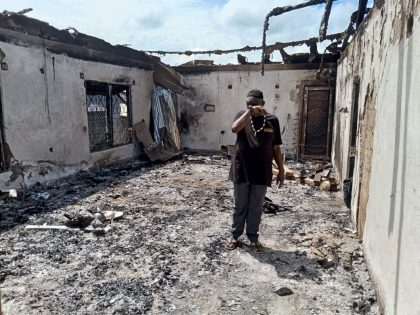El Negrito
Eduardo Galeano once described Diego Maradona: "... a short-legged bull, [who] carries the ball sewn to his foot and he’s got eyes all over his body."

Diego Maradona vs Belgium in Mexico 1986.
In Argentina, a country where class and race is not far from the surface, someone who comes from the Buenos Aires slums is known as scornfully “El Negrito.” As the writer Colm Toibin wrote in a profile of Diego Maradona in Esquire in 1991, El Negrito also refers to someone with darker skin than the ruling class (basically white Argentinians): specifically someone “… from the shanty towns beyond the city, with Bolivian or Paraguayan blood, perhaps with Indian blood.” Maradona has turned that insult on its head.
It’s a testament to Maradona’s talent and nous that this “little black,” who is arguably the world’s greatest player of all time (of course Pele’s supporters would disagree), will manage his country (incidentally, with another negrito, Carlos Tevez, leading his attack), this time as coach, to its third World Cup Finals tournament in South Africa.
Here’s a few reminders of the brilliance and comfort on the ball of the former player described in his prime by Eduardo Galeano as “… a short-legged bull, [who] carries the ball sewn to his foot and he’s got eyes all over his body.”
Galeano also wrote about Maradona:
“… He played, he won; he peed, he lost. Ephedrine turned up in his urinalysis and Maradona was booted out of the 1994 World Cup. Ephedrine, though not considered a stimulant by professional sports in the United States or many other countries, is prohibited in international competitions.
There was stupefaction and scandal, a blast of moral condemnation that left the whole world deaf. But somehow a few voices of support for the fallen idol managed to squeak through, not only in his wounded and dumbfounded Argentina, but in places as far away as Bangladesh, where a sizable demonstration repudiating FIFA and demanding Maradona’s return shook the streets. After all, to judge and condemn was easy. It was not so easy to forget that for many years Maradona had committed the sin of being the best, the crime of speaking out about things the powerful wanted kept quiet, and the felony of playing left handed, which according to the Oxford English Dictionary means not only “of or pertaining to the left hand” but also “sinister or questionable.”
Diego Armando Maradona never used stimulants before matches to stretch the limits of his body. It is true that he was into cocaine, but only at sad parties where he wanted to forget or be forgotten because he was cornered by glory and could not live without the fame that would not allow him to live in peace. He played better than anyone else in spite of the cocaine, not because of it.
He was overwhelmed by the weight of his own personality. Ever since that day long ago when fans first chanted his name, his spinal column caused him grief. Maradona carried a burden named Maradona that bent his back out of shape. The body as metaphor: his legs ached, he couldn’t sleep without pills. It did not take him long to realize it was impossible to live with the responsibility of being a god on the field, but from the beginning he knew that stopping was out of the question. “I need them to need me,” he confessed after many years of living under the tyrannical halo of superhuman performance, swollen with cortisone and analgesics and praise, harassed by the demands of his devotees and by the hatred of those he offended.
The pleasure of demolishing idols is directly proportional to the need to erect them. In Spain, when Goicoechea hit him from behind—even though he didn’t have the ball—and sidelined him for several months, some fanatics carried the author of this premeditated homicide on their shoulders. And all over the world plenty of people were ready to celebrate the fall of that arrogant interloper, that parvenu fugitive from hunger, that greaser who had the insolent audacity to swagger and boast …”
First, just for sheer enjoyment, watch Maradona warming up before a game for his Italian club, Napoli. And there’s that second goal against England in the 1986 World Cup semi-final in Mexico City.
A different class, El Negrito.
By the way, on Argentina’s African history and popular prejudices there against black people, see here and here, for example.



















